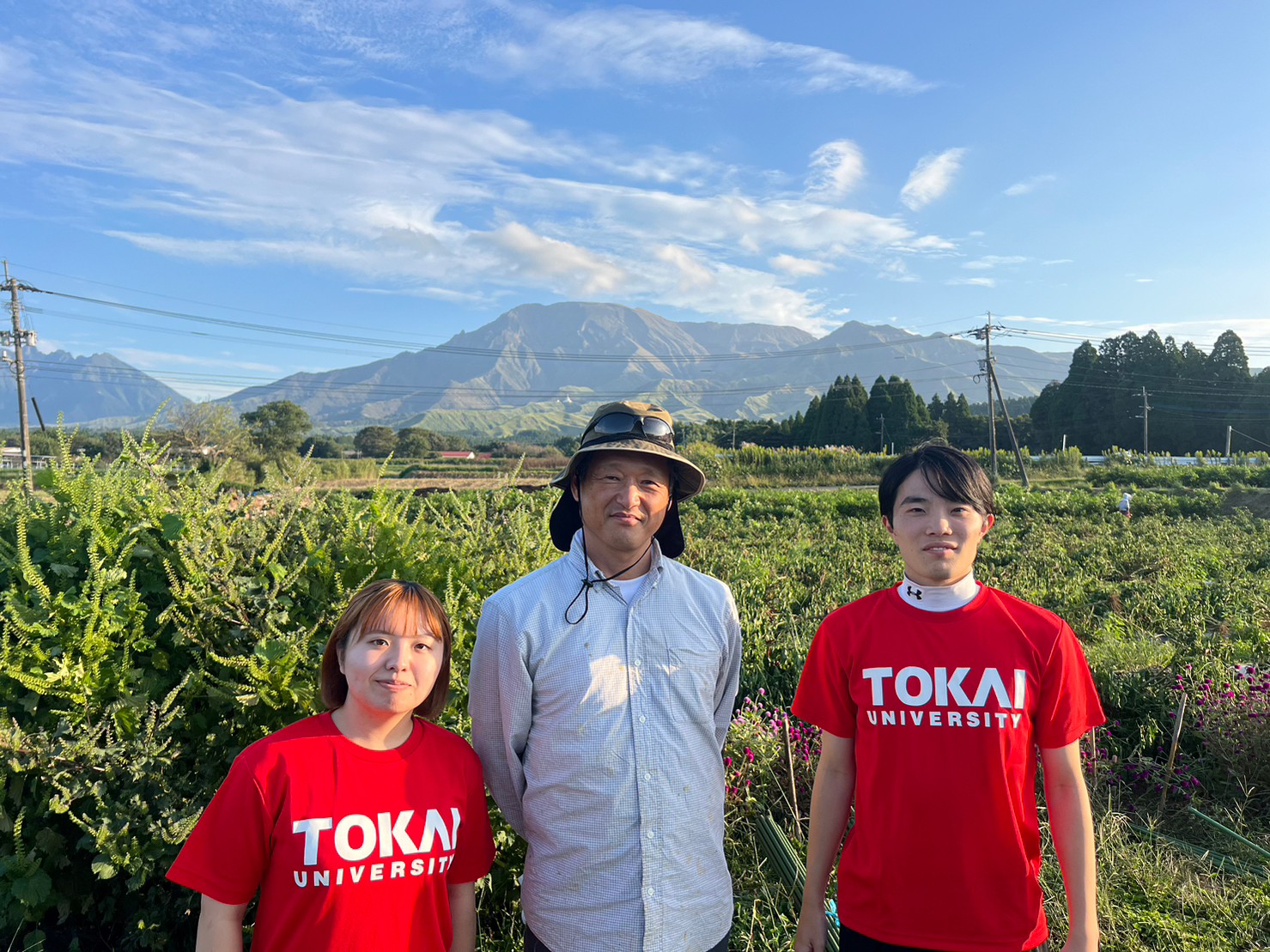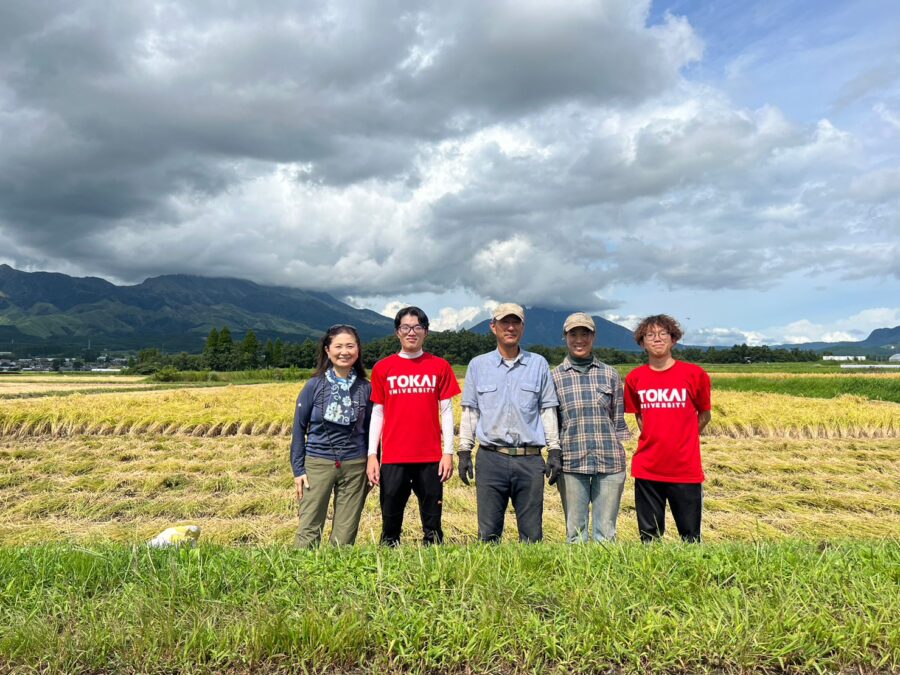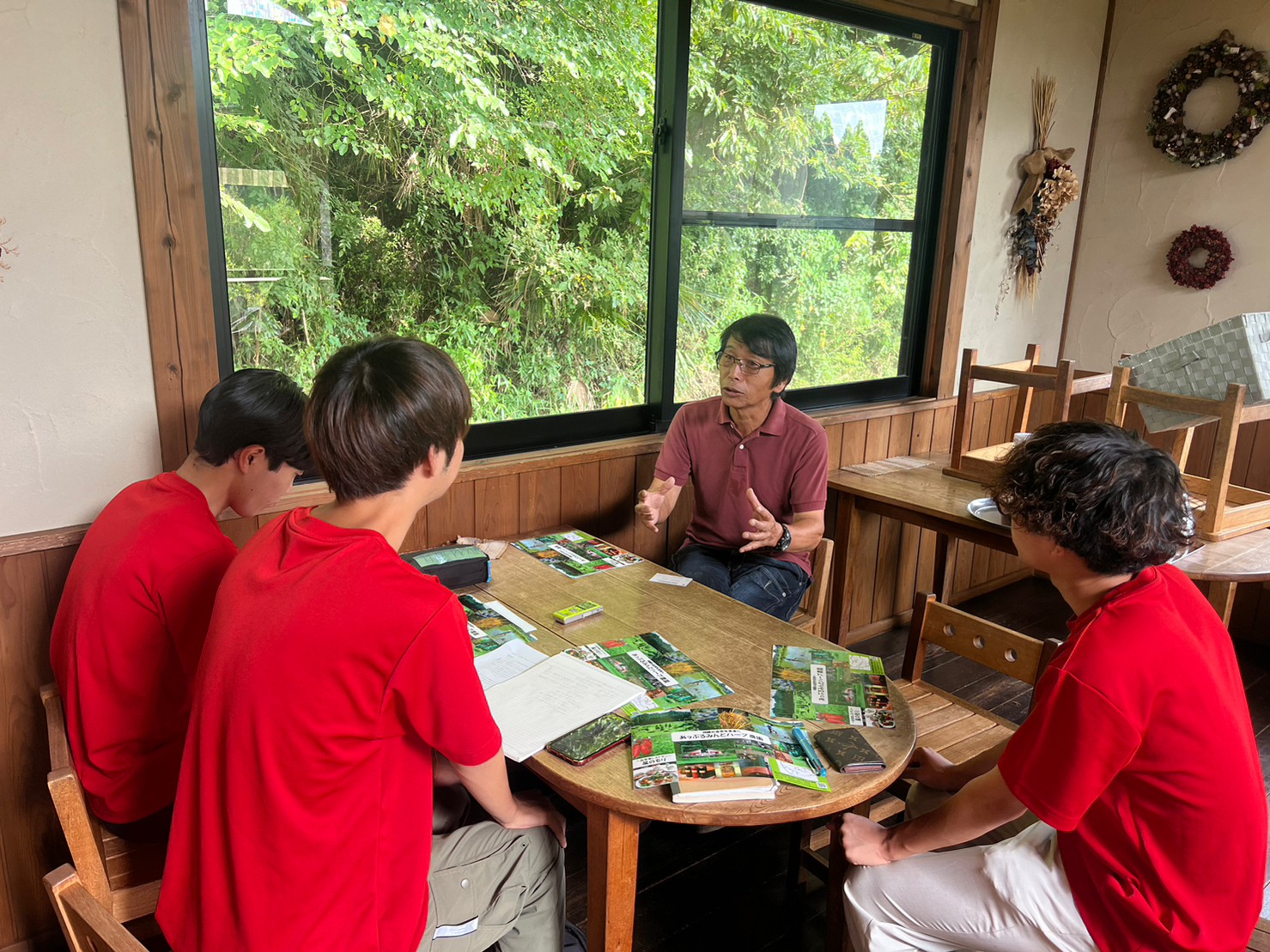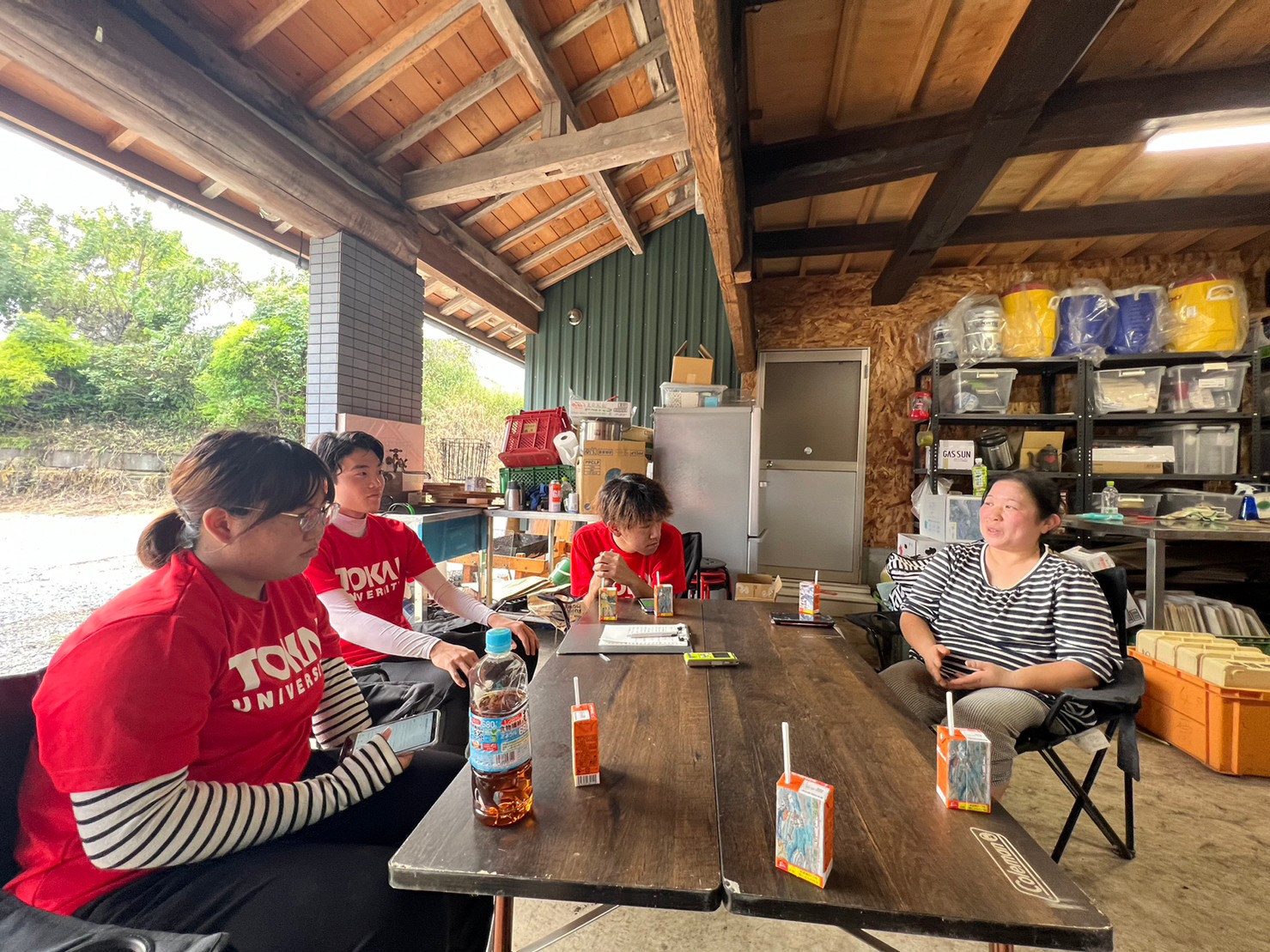Celebrating the 10th anniversary of “Global Agricultural Heritage Aso” certification
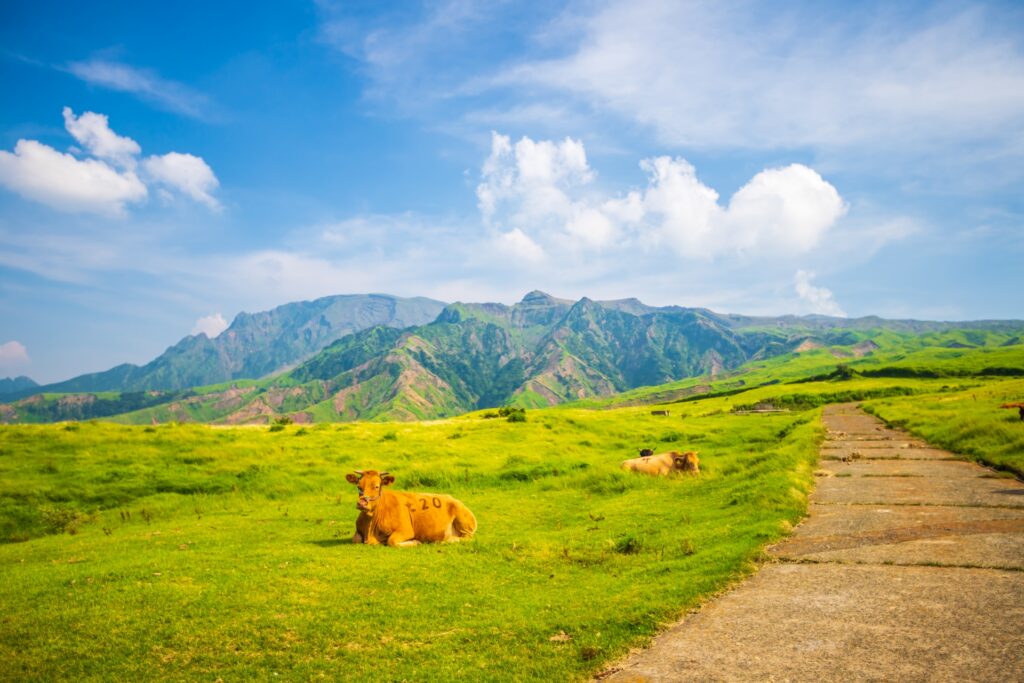
The grasslands of the Aso region have been maintained through agriculture such as burning and grazing for more than 1000 years.
Aso, which has grown together with grasslands, is blessed with diverse agriculture, rare flora and fauna, and traditional farming culture.Aso was recognized as a Global Agricultural Heritage Site in May 2013 as being of global value. We are celebrating our 5th anniversary.
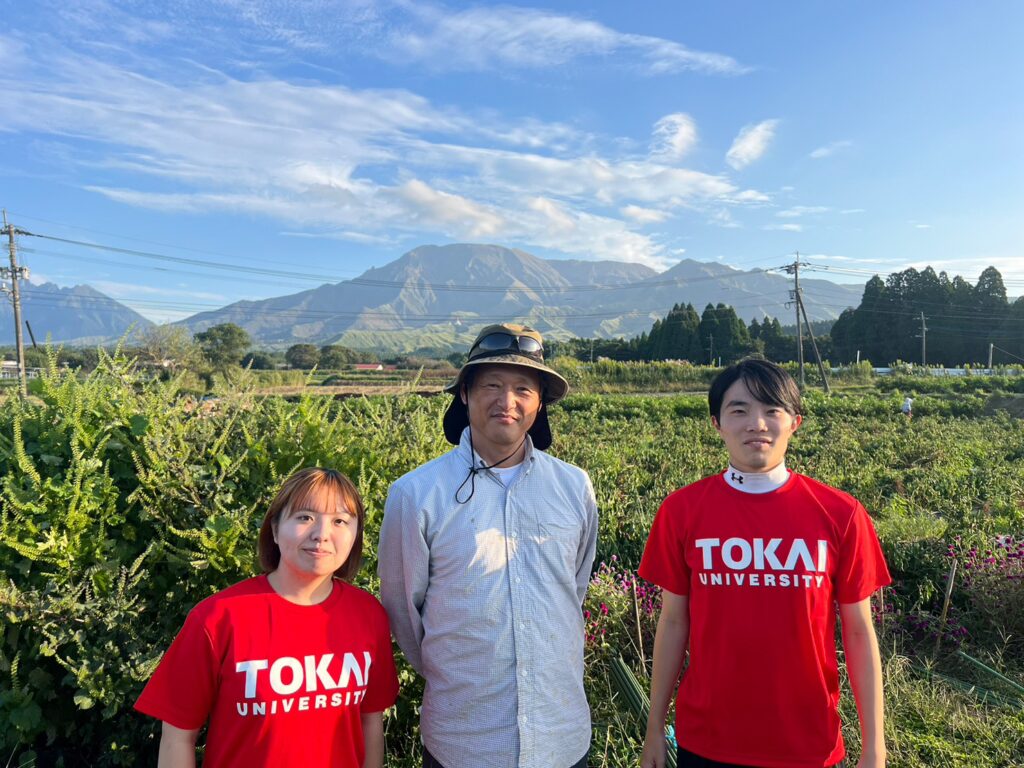
The Tokai University Ecotourism Research Group conducts research activities to learn about ``ecotourism,'' a system that preserves and utilizes regional treasures.
To mark the 10th anniversary of the World Agricultural Heritage designation, students from the Ecotourism Study Group visited the people who support Aso's agriculture in order to learn more about the agriculture, culture, and history that are the treasures of the Aso region.
This time, we spoke to Shuichi Kikuchi, the third-generation president of Kikuchi Foods, which makes Aso takana pickles using traditional methods, and also the head of the Aso City Tourism Association, about the current situation of Takana farmers in Aso and how they are making Aso a Global Agricultural Heritage Site. We spoke to them about how they can be used for tourism.
[Visit agricultural sites]
First, Mr. Kikuchi took me to the field where he usually grows mustard greens.The mountains of Aso could be seen in front of us, creating a peaceful landscape.Takana in Aso is grown in such a wonderful place.
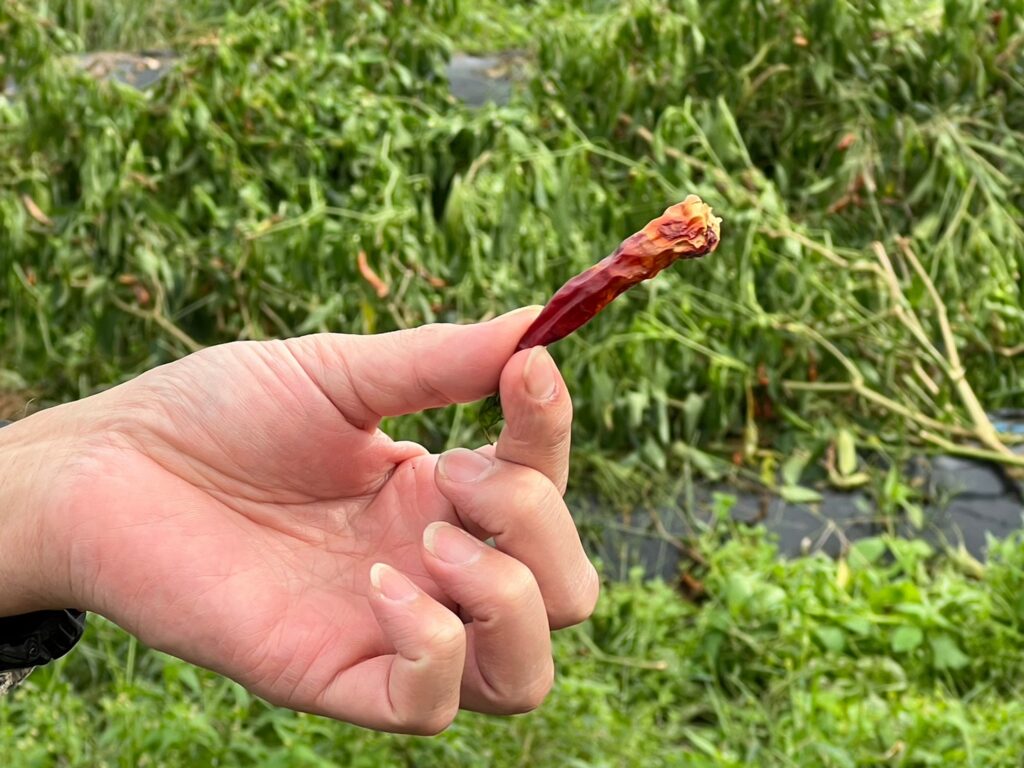
When we visited in September, they were growing chili peppers instead of mustard greens.This chili pepper is used when pickling mustard greens, and Mr. Kikuchi has been cultivating mustard greens and chili peppers for nearly 9 years.The fields are utilized without wastage throughout the year!
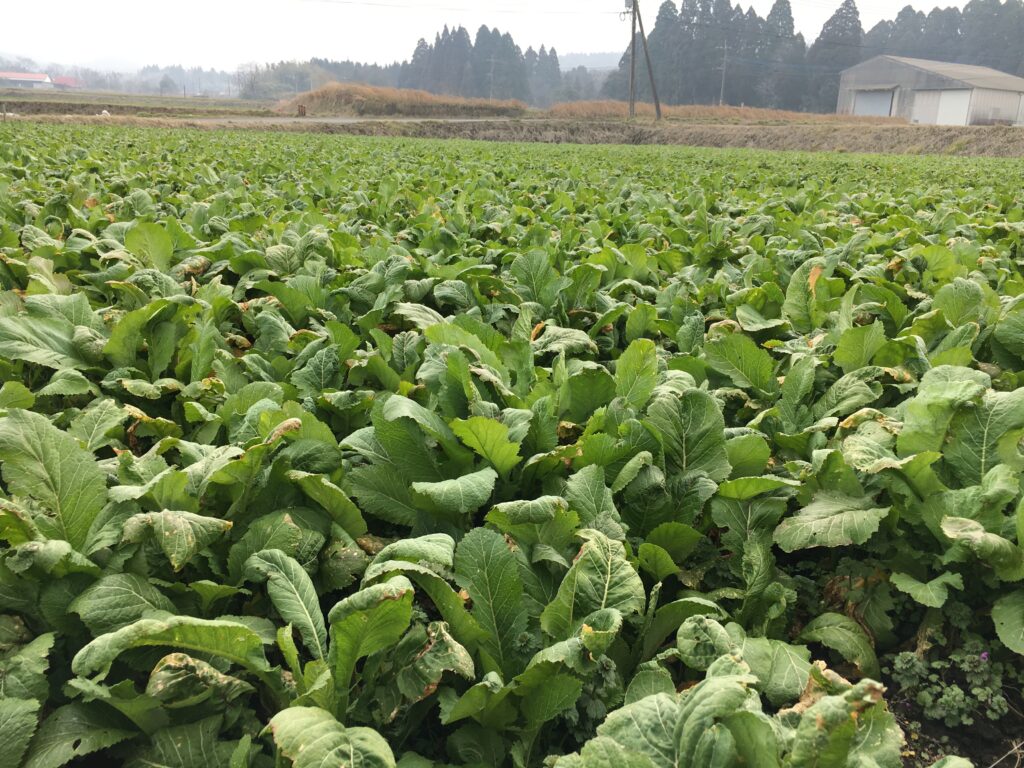
This photo is of a Takana field that was taken previously.The time was different this time, so I couldn't actually see Takana.I've only seen pickled mustard greens, but this is Takana before pickling!
[We asked about agriculture and tourism in Aso]
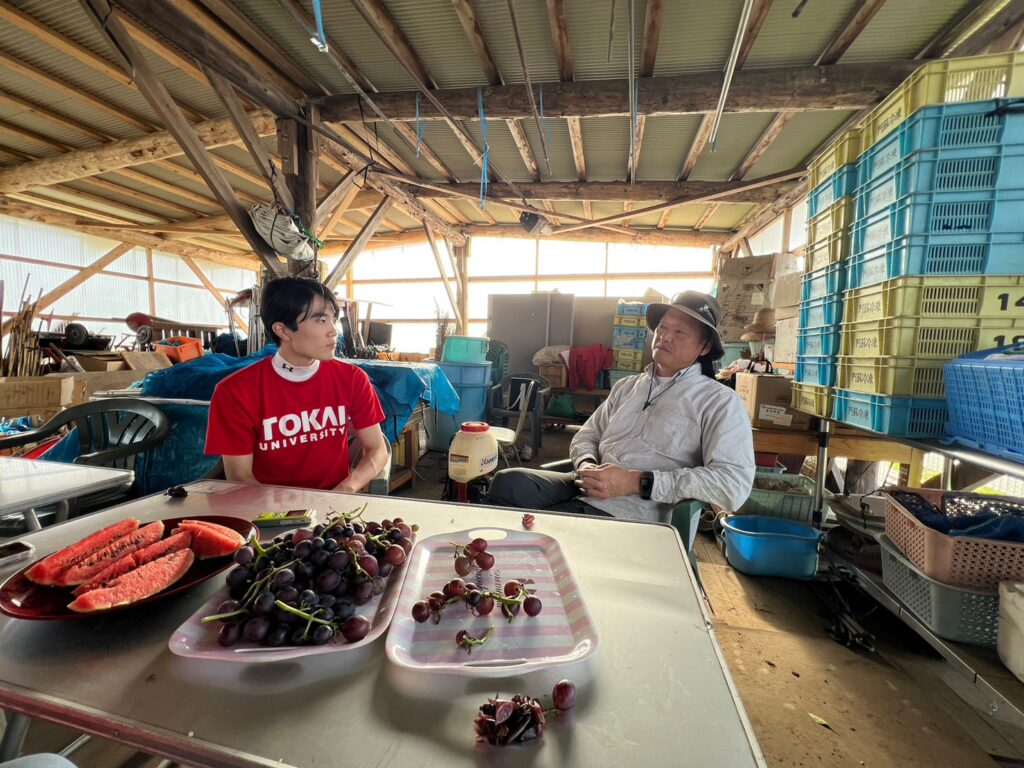
--- Aso was registered as a Global Agricultural Heritage Site in 2013. What was it about Aso's agriculture that made it so highly regarded?
Mr. Shuichi Kikuchi:The grassland has been maintained and managed by humans by burning fields.Agriculture in Aso is special because there are cows and horses that use the grasslands.
In Aso's agriculture, rice and vegetables are grown using the waste from cows and horses and plants from grasslands as compost.This cycle of livestock, grassland, and agriculture was highly evaluated.Since there is no livestock farming in other areas, it is not possible to use compost from cows and horses.I think we should be able to better promote Aso's unique circular agriculture.
This was the first time I learned that agriculture in Aso is cyclical.I've seen cows and horses in Aso, but I just thought they were Aso-like and cute.The way you look at animals changes when you think that they are contributing to Aso's agriculture!
After hearing about Aso's agricultural cycle, I decided to next hear about Takana farming.Previously, when I researched Aso's mustard greens on the internet, I learned that they were grown without the use of pesticides.
---I think there are some farmers who use pesticides when farming, but why is it possible to grow Aso's mustard greens without using pesticides?
Mr. Kikuchi: Takana survives the winter.Winter is not the season for pests, so there is no need to use pesticides.However, in recent years, the weather has been abnormal and the temperature has been a little high.In addition, heavy rain may continue to fall around January and February.Due to these influences, insects called Chinese cabbage mites, which attach to green foods, are appearing.
Pesticides are required to protect crops from Chinese cabbage mites, but they cannot be used as they have not yet been approved.It takes two to three years to be approved.We are currently working hard together with Kumamoto Prefecture.
After listening to Mr. Kikuchi's story so far, I thought that the advantage of not using pesticides would be lost.
--Will it still be difficult to grow mustard greens without using pesticides in the future?
Mr. Kikuchi: People who farm without using pesticides contacted me and told me how to improve soil with lactic acid bacteria and that adding electrolyzed water can be effective.From now on, I'm thinking of trying it out in various places.
I thought that the only way to deal with pest infestations was to use pesticides, but this is the first time I've heard that such a method exists.If successful, it will be possible to grow mustard greens without using pesticides in the future!
---I think that the declining and aging farming population has become a problem recently, but are the number of mustard greens farmers also decreasing?
Mr. Kikuchi:As expected, some of the mustard greens farmers around me say, ``I can't grow anymore'' and quit their jobs.So, I recently put out an advertisement saying that mustard greens cultivation is in a pinch.It is difficult to sit down and bend over to harvest.
Young people and people who don't work in agriculture aren't used to working in the dirt, so it's quite difficult.It is easy to plant mustard greens, but harvesting them is difficult.
---How about creating an experience program that combines the harvest of mustard greens with tourism?
Mr. Kikuchi:I think that's a good way too.It will also be a good PR for Aso's agriculture.By letting them know how difficult it is, you can help them understand the value and secure human resources.
Another thing I'm thinking about is having high school and university students harvest mustard greens to earn money for club and club activities.We get to help with the harvest, so it's a win-win situation for both of us, isn't it?
I thought it was a really good idea.There is a possibility that some young people will become interested in agriculture after experiencing the mustard greens harvest.Above all, it helps us secure human resources, and it's also a good opportunity to experience agriculture.

in conclusion
This time, I asked Mr. Kikuchi about Aso's agriculture, and I learned that Aso's agriculture is based on cows, horses, and grasslands.Before doing this interview, all I had to do was enjoy the scenery of cows and horses in the grasslands of Aso.However, I learned that cows, horses, and grasslands are deeply connected to Aso's agriculture and that they circulate, and I was able to reaffirm the value of Aso compared to before the interview.
In addition, through interviews, I felt that the aging of agricultural workers and the shortage of farmers are major issues, and that they will only become more serious in the future.To solve this problem, we thought it would be a good idea to create an experiential program that combines agriculture and tourism.I believe that a wide variety of people can experience the challenges and rewards of farming through their experiences.
If you learn about and experience agriculture, the food you eat in Aso will taste even better, and you'll start to see that everything from cows to horses to grasslands has value!
Introducing Kikuchi Foods
Lastly, I would like to introduce Kikuchi Foods' Takana!Takana rice can be eaten at restaurants in Aso.I definitely recommend the Takana rice.
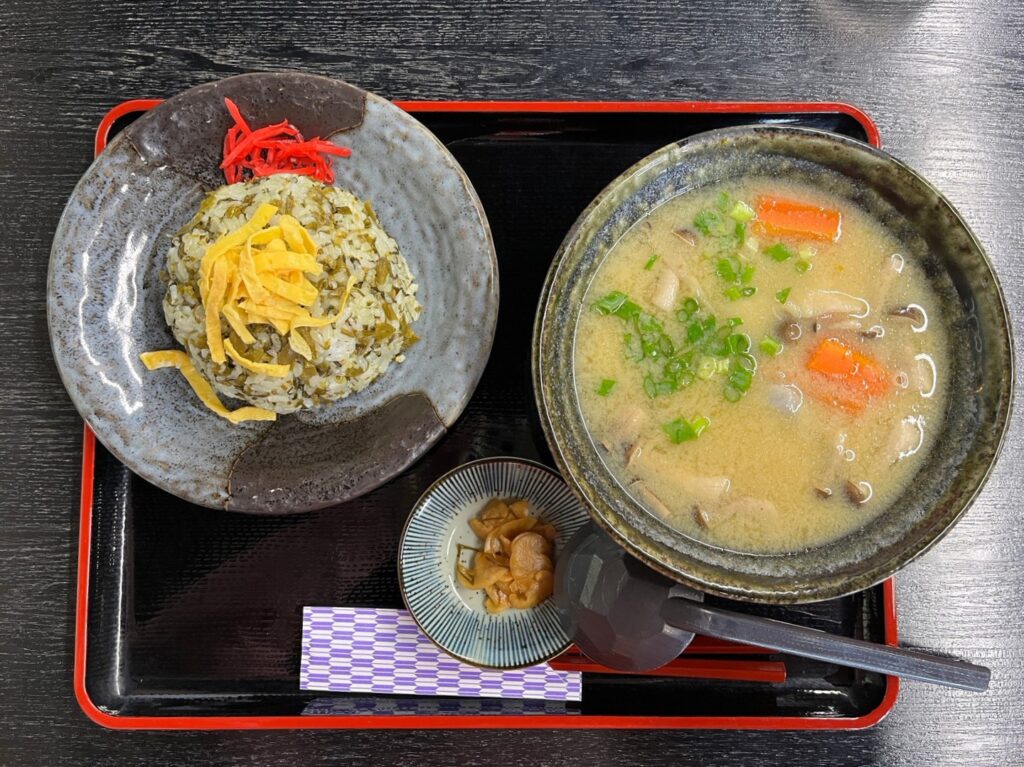
I remember being surprised at how delicious Takana Meshi was when I first ate it for school lunch in elementary school. I regretted it and thought, ``Why did I hate something so delicious?''
I strongly hope that more young people will try Takana Meshi, a local dish of Kumamoto.

Kikuchi Foods sells various types of Takanazuke!Takana is harvested by hand, without the use of machines.That seems to be the secret to creating a delicious texture.
Please try Takanazuke from Kikuchi Foods!
Kikuchi FoodsClick here for details
http://kikuchishokuhin.co.jp
Tokai University Ecotourism Research Group 2nd year
Seika Murakami

